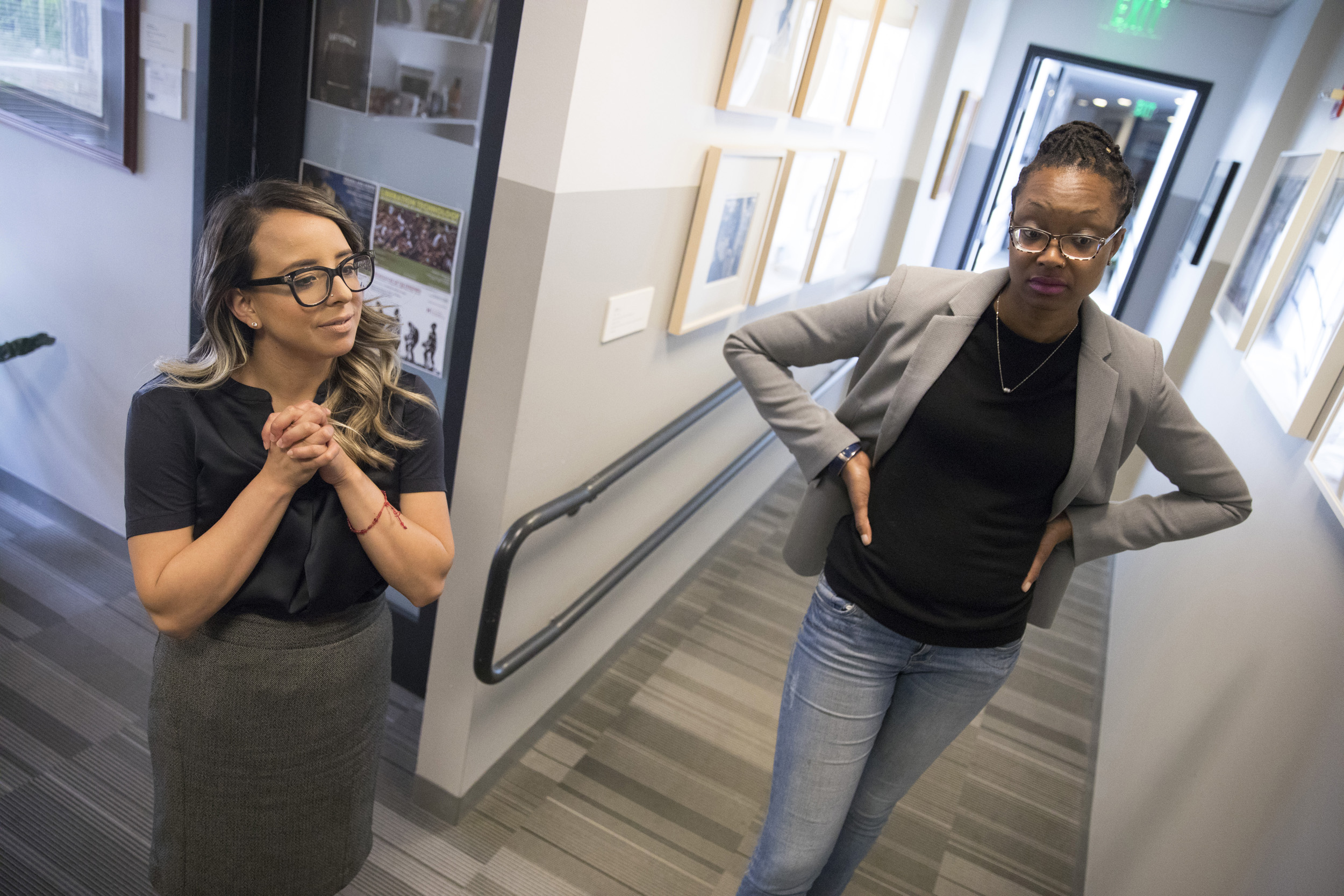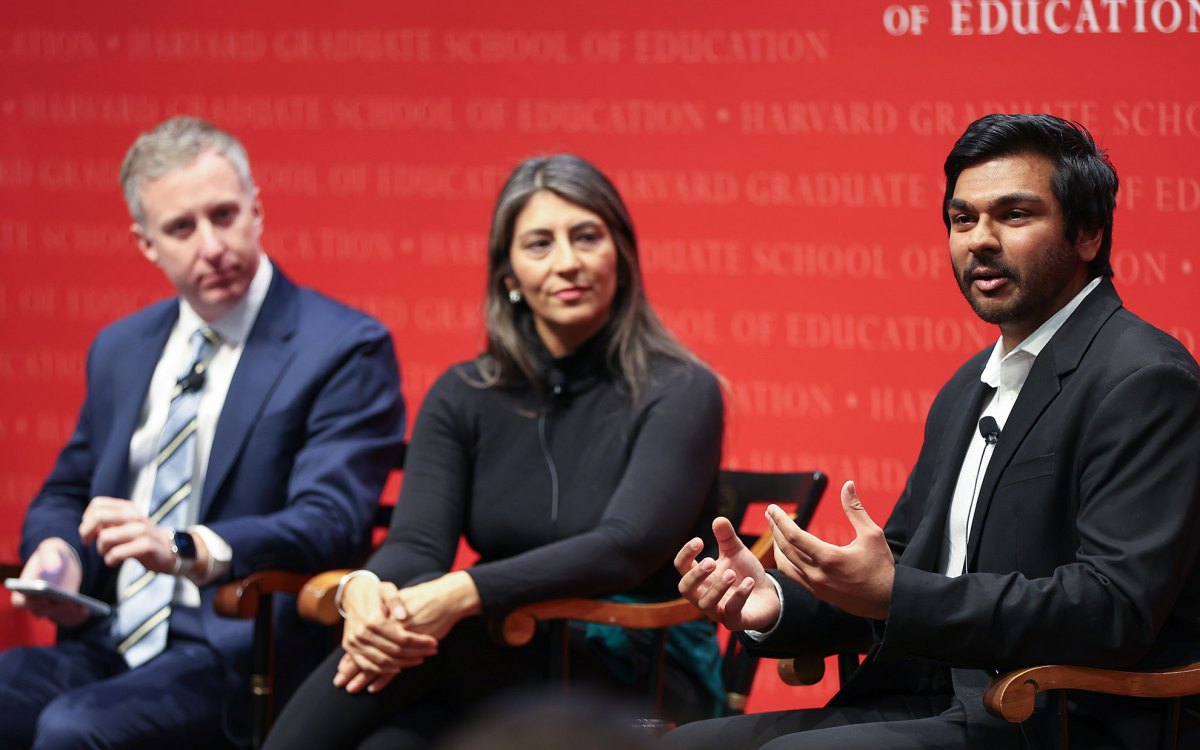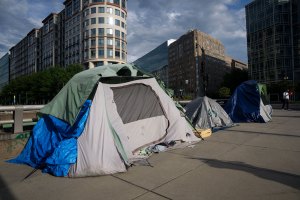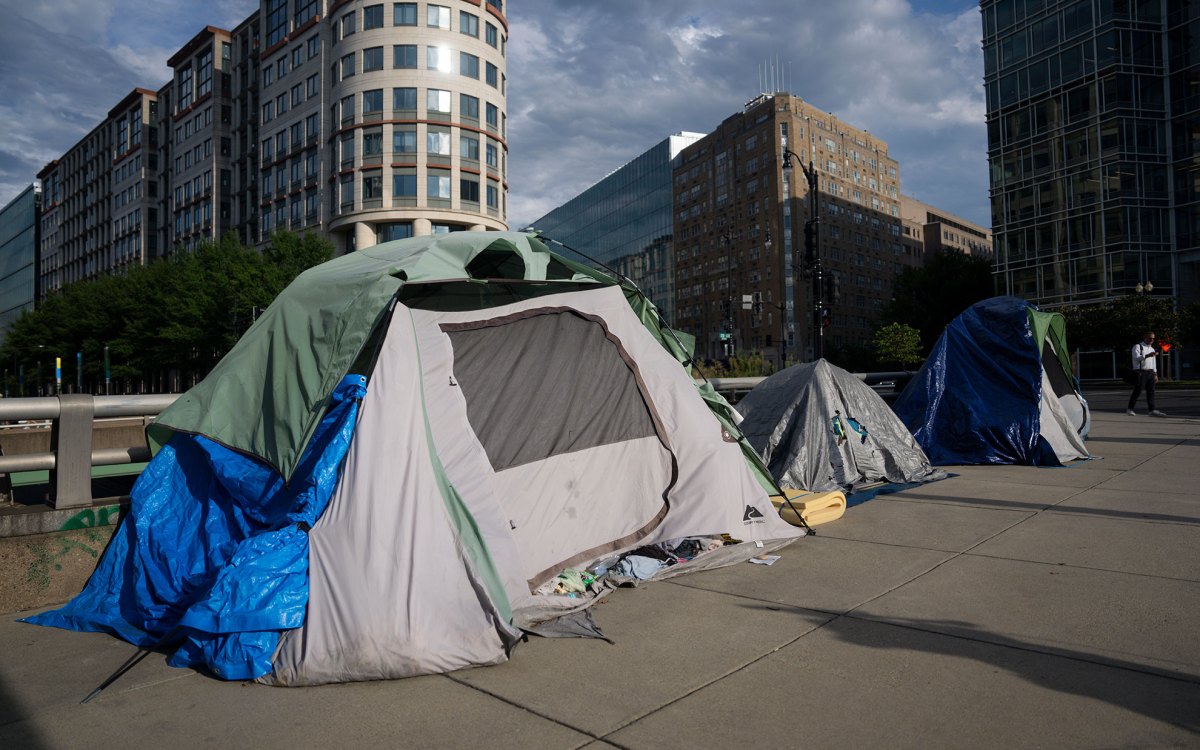
To help local teachers counteract racism in their classrooms, Ed School students Soraya Ramos (left) and Cassandra St. Vil recently offered up a program on race and equity in education.
Kris Snibbe/Harvard Staff Photographer
Local teachers get an education in addressing hard questions
Ed School program addresses race, equity in school systems
Race and socioeconomic status are often predictors of future advantage or disadvantages in life. K‒12 education can be another. To raise the floor and help teach school leaders how to confront and counteract racism in their classrooms, two students at Harvard’s Graduate School of Education recently created a program on race and equity in education and offered it to teachers in Boston and Cambridge.
In a recent email exchange, the Gazette asked both of the students, Soraya Ramos and Cassandra St. Vil, to explain the program. They did so in their written responses, together and individually.
Q&A
Soraya Ramos & Cassandra St. Vil
GAZETTE: What motivated you to develop this?
RAMOS AND ST. VIL: We had both been teachers before coming to Harvard, and we recognized the importance of preparing coherent and effective sessions around the uncomfortable topics of race and racism. How do we discuss racism in a color-blind society? How can we push for the difficult conversations without defensiveness? What actions do we want this community to take as a result of attending these sessions? We were up for the challenge. It took three months of planning to tackle these questions in thoughtful ways to share with local professionals.
RAMOS: A quote by the legendary Civil Rights leader and Congressman John Lewis has resonated with me since the very first time I heard it. “If not us, then who? If not now, then when?” Those were the words that crossed my mind when we were first asked about developing and facilitating these sessions. Although I had some self-doubt about the potential outcomes, I was well aware of the urgency of discussing difficult topics like racism with professionals in education, especially given the contentious political climate. Avoiding these conversations would not only be a disservice to our students, but also a missed opportunity to build empathy across lines of difference.
GAZETTE: How did you get started?
RAMOS AND ST. VIL: We decided to employ the critical race theory (CRT) framework as a lens to understand racism and counteract it in our lives and workspaces. Derrick Bell, lawyer, scholar, and former Harvard professor, is credited as the founder of critical race theory. It began as counter-legal scholarship arguing against the objectivity of law and its practitioners. CRT centered the conversation on the convergence of power, race, and racism to address the liberal notion of color-blindness. Longtime educator Gloria Ladsen-Billings is known for translating CRT into education.
Six tenets within critical race theory framed our sessions, and the common ways that racism manifests in schools and out-of-school-time (OST) programming. By expanding knowledge of meritocracy, liberalism, color-blindness, interest convergence, intersectionality, and the permanence of racism, our OST community was given language and vocabulary to notice — and then name — injustices students experienced in their everyday lives.
GAZETTE: What kinds of topics or ideas were raised?
RAMOS AND ST. VIL: Our sessions operated from the fact that racism exists and is woven in the fabric of the U.S. Our community of OST professionals created a space safe to ask questions and consider ideas, as well as confront racism and discrimination. We recognized that we were all somehow complicit in perpetuating systems of oppression and collaborated on ways in which to counteract it.
We were both intentional and relentless in our session design, and we were extremely pleased that the community was highly engaged and participatory. The first session began with the vulnerable work of identity. As practitioners, we would be required to introspect and ask ourselves difficult questions shaping our work: Who am I? How does my identity affect the work I do in communities of color? Session two continued this community-building, working together to spiral understanding and application of CRT tenets, as well as model action planning toward specific counter-racist strategies.
GAZETTE: This topic seems particularly poignant and important in today’s world. Did the attendees find the lessons and discussions helpful?
RAMOS AND ST. VIL: One attendee told us that the way they plan to counteract racism is by speaking up and starting an open conversation, holding back judgment and listening. Many attendees told us that they were very happy with what they learned. Nearly 94 percent of respondents said they strongly agreed that the sessions trained them how to use critical race theory tenets to understand racism. One hundred percent indicated that they left with strategies to counteract racism in their work. Some discussed counter-storytelling as a method to share marginalized narratives. We really couldn’t be happier with the outcome.
GAZETTE: What have you learned, or taken away, from this experience?
RAMOS: I learned that adults and students must build the competencies to have the difficult conversations on race and racism. I also learned that I must be patient with adults’ learning, and although there is urgency in counteracting racism, I must remember that changing hearts and minds is a process.
ST. VIL: I remembered that I love this work. Most people want to push past the normal, have their racial identities included, and respect the identities of others … but don’t always have the toolset to be able to do so. I am not an expert, but I am so pleased to have had the opportunity to demonstrate the curiosity, openness, and courage it takes to dismantle racism and oppression with a community of eager professionals who care about kids.
GAZETTE: So what’s next for both of you, now that you’ve graduated?
RAMOS AND ST. VIL: We’re both extremely committed to continuing to promote equity in schools, and we’re both planning on continuing anti-racism work moving ahead.
ST. VIL:I intend to open a cultural-immersion, college-preparatory high school.
RAMOS:And I am seeking opportunities to continue consulting in diversity, equity, and inclusion, with particular emphasis on urban education.
This interview has been lightly edited.




